Around the World a 3rd Time (China inland visits)
The Danxia phenomena in Zhangye
From Beijing we flew on an Asia Pass, acquired from Delta’s RTW (Round the World) desk, to the city of Xining on the western side of China, where we had less than 1 hour to ride by taxi 31km/19m to the Xining train station, where we sat in a six person sleeper cabin with 5 ladies and a rambunctious 5,6 or 7 year old child, controlling mama, granny and aunties to hand over cookies, play games and whatever else came to him.
Xining railway station, huge despite “small” town in western China
Waiting room for train passengers only
One of the many gates: this to platform of rail 12 and 13
The Xining train station, as many others in China, consisted of an immense glass covered hall, holding a thousand plus travellers (no farewell wishers allowed) with many gates leading to many train platforms. The gates opened 15 minutes before the train arrival as announced on large screens.
Train arrival, we are allowed to platform 10m early
Cabin staff person arrives for duty
At the gate, electronic ticket control takes place. Our train traveling crowd looked for their numbered section on the platform to enter the correct train wagon and compartment, rechecked by an attendant at each door.
The fields around the desert town of Zhangye are covered to avoid sandstorms in town
Zhangye is an agricultural town with surrounding farms and covered fallow fields
When we left the train in our destination city of Zhangye, we commiserated about the 1 child policy side effects on display to us for several hours, even though the policy had been eliminated in 2015.
Just a few colorful pictures on the edge of town
I loved the colors surrounding us
Sandstone mountains and tree farm
Zhangye is a 1.2 million inhabitants district capital in the province of Gansu bordering Mongolia, both sharing the Gobi desert. We witnessed many new high rises being built or completed, but still unoccupied, all built for the new citizens influx as per the planned resettlement programs of the government, because China wishes to distribute its population (21% of the world population) more “evenly” across the country. Actually wherever we traveled in China, we saw ongoing high rise construction and empty completed high rises awaiting occupants.
Central planning of the Beijing government dictated these new towns, still to be populated by people that haven’t arrived yet to this faraway province near the Mongolian border
Going to Zhangye, was one of the main reasons for spending almost 3 weeks in China: and that was seeing the real colors of the Danxia in the Geopark there. Our desire to see that, gave us the opportunity to also visit Jiayuguan, where the gateway to the west or the silk road’s entry into China, or the most western point of the Great Wall of China, is situated.
Our guide ”Lisa” who spoke heavily accented broken English and our driver Mr. Cheng met us at the railway station and brought us to the only western hotel here, the one year old Holiday Inn Express, where we were treated royally, for as much as Holiday Inn can do “royally”, not only because of our IHG status, but also since we were the only non-Chinese guests. Traveling the 3 full days there did not change this statistic, wherever we went.
The newly opened geopark shows interesting remnants of the gletscher that carved the gully through the sandstone surroundings eons ago.
All the towering rock formations had names
Like the three sisters
Danica (Chinese word for vermillion or sunglow) is a geological phenomena, resulting from the uplift of the earth by colliding tectonic plates, exposing red-colored sandstone and other mineral deposits that create a spectrum of colors, that are often enhanced in photos.
This was our first encounters with the colored mountains
These colors are not “doctored” by me
The multitude of chemical elements in these “pushed up” hills create these wonderful striata
Could not get enough of the sights all around us as buses ferried us from platform to platform
Miles and miles of undulating hills as far as our eyes could see
Thus our desire to check out the real colors. Our pictures will tell you the real story. In the high season 30,000 visitors are daily bussed from looking platform to looking platform or as google states: in 2018 2.32 million visitors came to see this to believe. Being out of season we didn’t have too many Chinese surrounding us.
A tethered balloon gave tourists an opportunity to see this from above
Zhangye being an agricultural center is full of colors
And of course historical heros
Our trip even further west brought us to Jiayuguan, the most western gateway to China
heavily fortified and the end of the Great Wall of China
the Silk Road brought Marco Polo from ancient Babylon to the Han Emperors through the gates here into China
 As you can see the wall here is extensively repaired to serve tourism
As you can see the wall here is extensively repaired to serve tourism
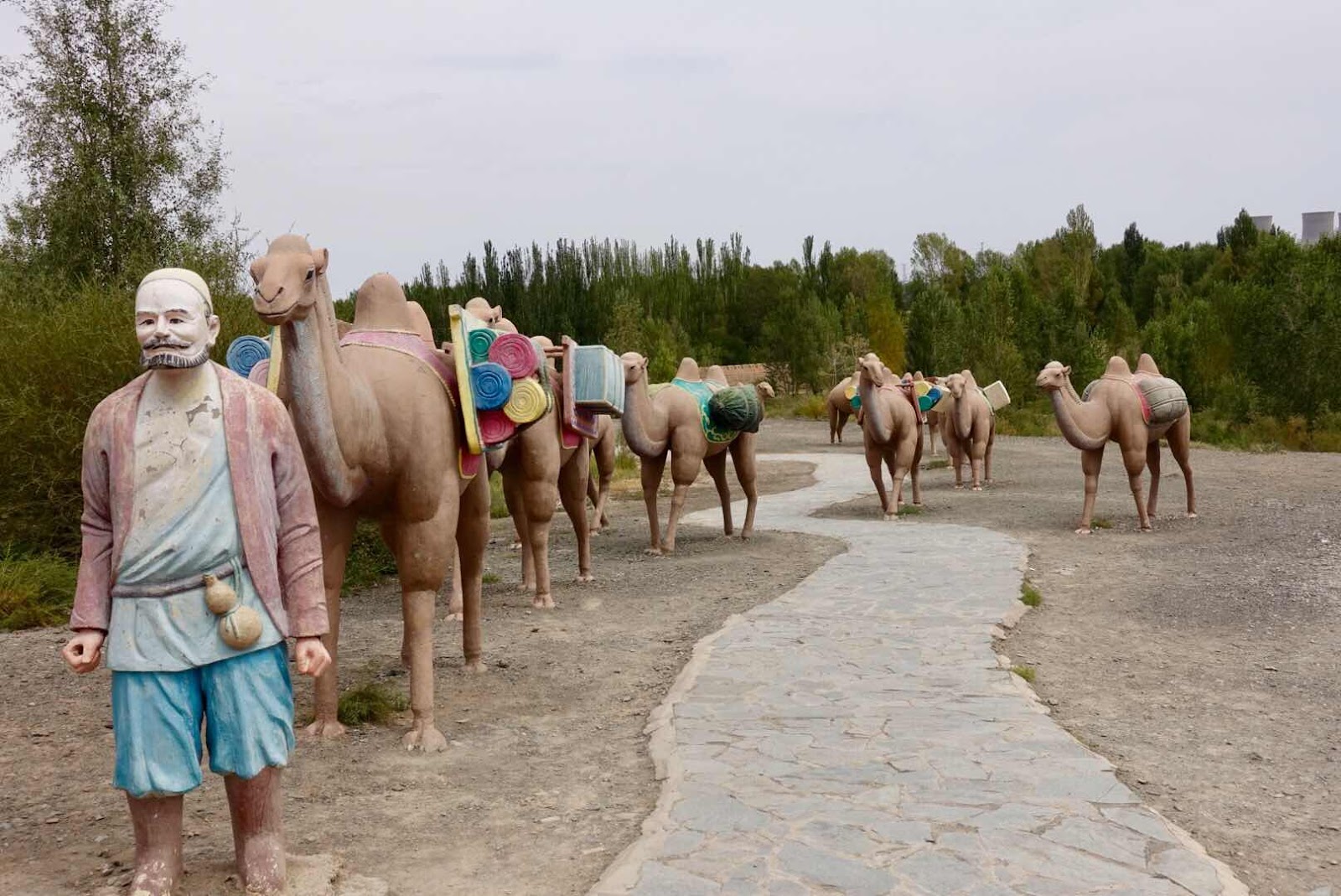
These statues highlight the history of the Silk Road used heavily from 200 BC to 200AC
These statues highlight the history of the Silk Road used heavily from 200 BC to 200AC
Lisa and Mr. Cheng never joined us for the daily lunch consisting of hot water and noodles or rice with vegetables and a steamed meat. Lisa brought us newly bought fork, spoon and knife, as she expected us not to be able to use chop sticks, and washed them at our table with the hot water from our glasses. Strange enough Chinese meals lack napkins.
On the west side of Zhangye we found the Horse Hoof Monastery or Mari Temple
Important early Buddha Grotto temple compound
With the traditional red ribbon trees
The many monk residences of the olden days, now uninhabited.
The rarity of these grotto temple structures with intact vibrant colors keep being impressive
Stories and explanations of the other things we saw, can be found below the pictures.
A few Chinese “funny” translations with typical “papa state” admonishments
Warning:Pass by Quickly
Taking the train back, being waved goodbye by Lisa, we found our way reversing the trip to the capital city of Chengdu (translated “to become capital”) in the Sichuan province, famed for its spicy food and the panda breeding center, which has pandas all over the world in zoos on loan. The city was founded in the 4th century BC. So you would expect historic sections of town, but, NO, you need to visit musea for that.
Luckily, our main interest here was exploring a midsized city as its functions today as well as seeing the pandas while there.
Chengdu is a midsized town in China: only 14 million inhabitants
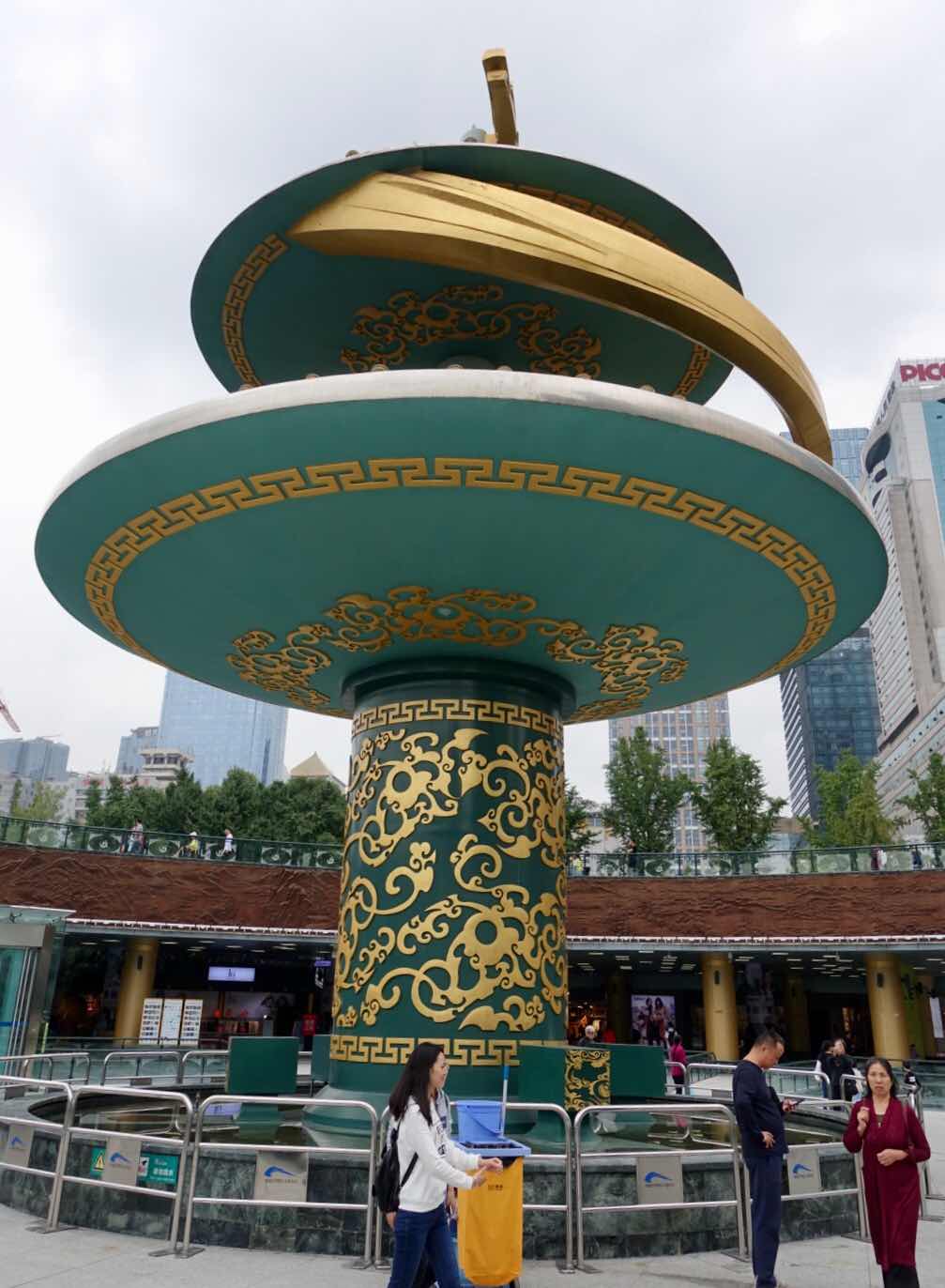

Eastern cities like Gold and Green
Interesting temple formation
Well, here is what you encounter in 2018 Chengdu: a modern almost western city with the center of the city filled with half the Forbes 500 companies, with all the conveniences of this century: modern metro, nice buses, taxis, terraces, major shopping centers with all the famous brands one expects today in places like this 14 million big city, with a per capita income of 11,000 US dollars, famous for its spicy hotpot cuisine.
Chinese like congregating in their parks
Volunteers do the performing for ever growing spectator crowds
Question: who brings the props?
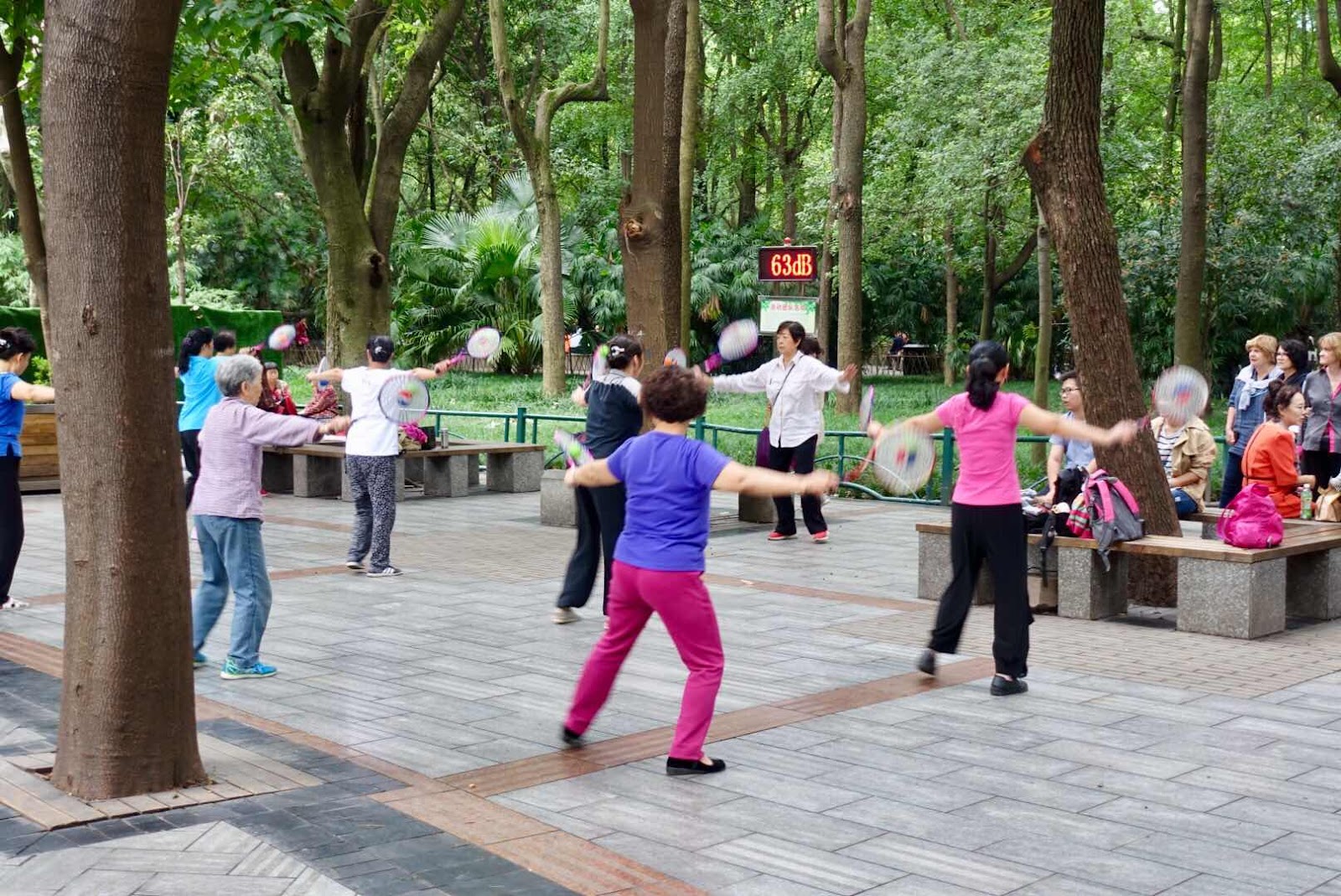

Tai Chi, not everybody is senior
And boating is very popular too
And for Chinese aspects: dotted with tea houses and parks with mahjong players and tai chi exercising elders. We were met by our volunteer guide for one day Lydia Luo, who teaches English in secondary school. Lydia brought us to the People’s Park, one of the larger downtown parks, where all day, people congregate to dance and sing. (Electronic sound measuring screens record the volume of sound made, so that people are warned not to be too loud.) Every Chinese park has little canals and lakes with typical, very Chinese looking, stone arched bridges. Again the pictures will tell the story best.
We found the “Parents promoting their single children for marriage” hilarious
Candy salesman sells colorful hard sugar figurines to lick nearby the “Parents promoting their left over children market” to children too young to be marketed yet.

In the age of internet matching options, this is the way parents with no FaceBook weigh in
A very interesting part of the park Lydia showed us, was the Parents Corner, a place where concerned elderly parents congregated, hanging hand written descriptions of their grown single children, seeking to find a proper match for their son or daughter. Same thing millennials do online now.
As you see there are many opportunities to find new mate with parental approval built in
But here it was in its most basic form, a piece of paper hanging from a tree branch or spiked to a railing, with the parent ready to enhance their story and be more descriptive to potential other parents or young people that might show more interest in their kid after reading the “bio”.
Tea house in a park is a popular outing
Testing a new dress for your next party?


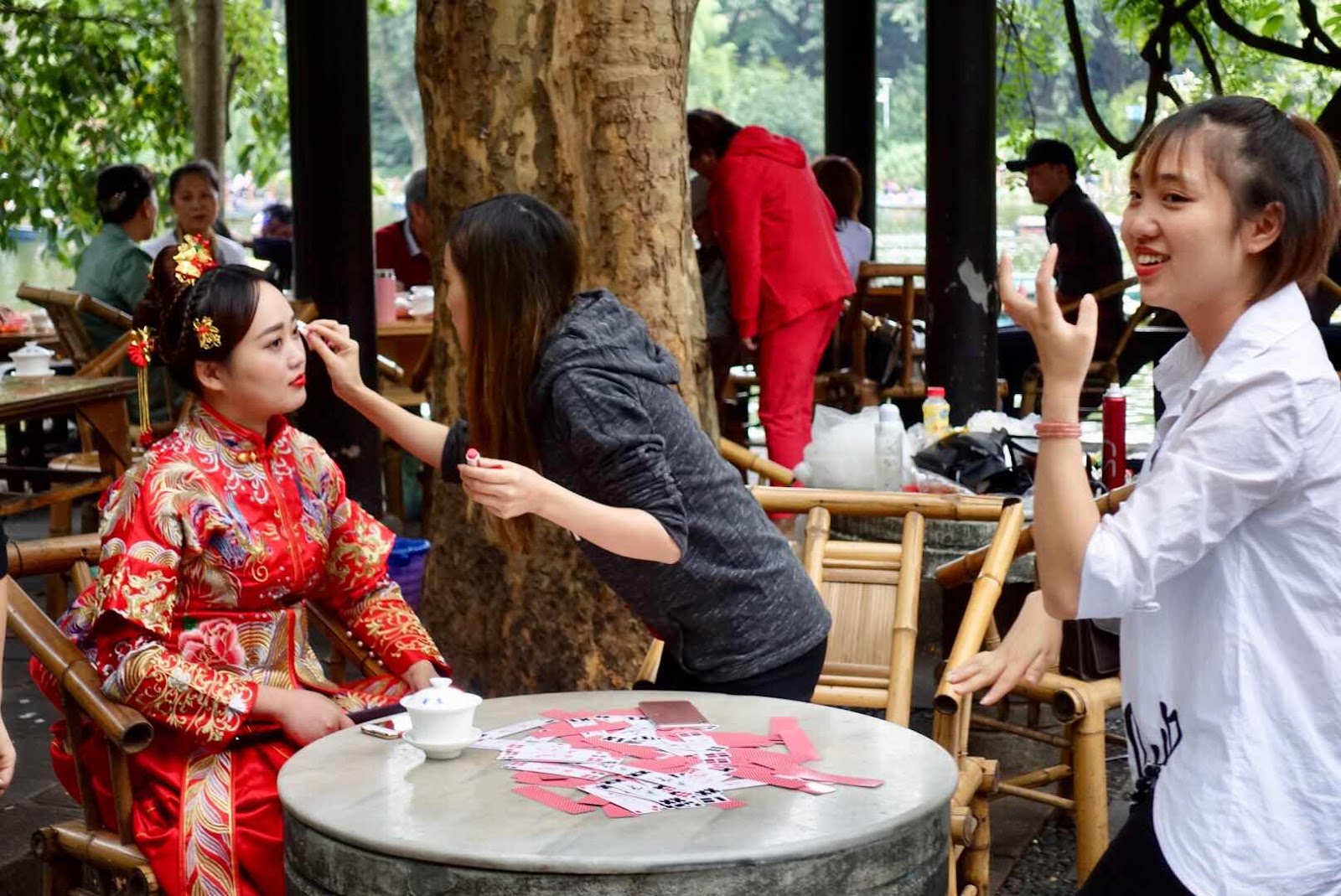
What I liked most was the relaxed atmosphere
Ear cleaning is very popular in China. Note the magnifying lens of the “ear cleaning doctor”
Finishing touches
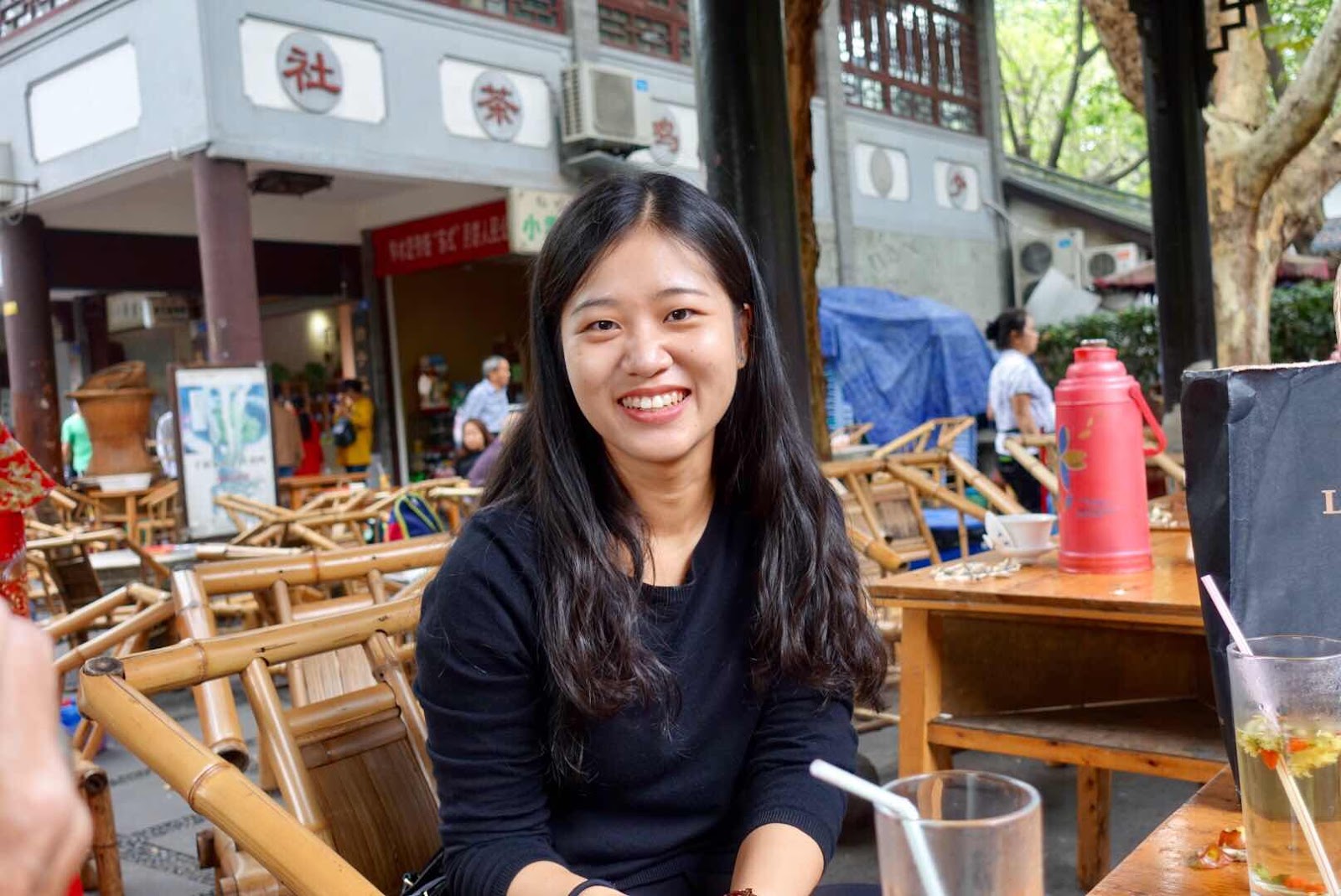
Lydia who showed us around her beautiful city
After a few hours in the park, we ended in a tea house at the lake among hundreds of other clients enjoying a pot of tea (tens of different tea choices were listed on the menu, which Lydia had to translate and explain to us) and some almond cookies were offered to us by a nearby older group, who had brought their own lunch.
A historical touristy neighborhood
Photo-op wall: taxi of yonder year
Restaurant invite: Guess the type of food
Just a nice view of an alley
The inner city is so modern now that Chinese flock to a rather fake remnant of “old town” full of touristy offerings, which Lydia also put on the days itinerary, before she said her goodbyes.
The food in Chengdu is spicy really spicy
But looks inviting
The small dives we visited showed their stockroom from our tables
Waiting for our transport to the next dive to eat there
End of the night is floor swiping time
That evening we joined a group of 10 tourists from all over the world for a food tour like we did in Beijing, drinking beer all night and being driven from local dives to little family owned restaurants sampling Sichuan food, like BBQ filled pancakes, “100 yr old eggs”, dumplings and noodles. We considered the Beijing trip being the better tour.
And then there were the pandas that made Chengdu famous
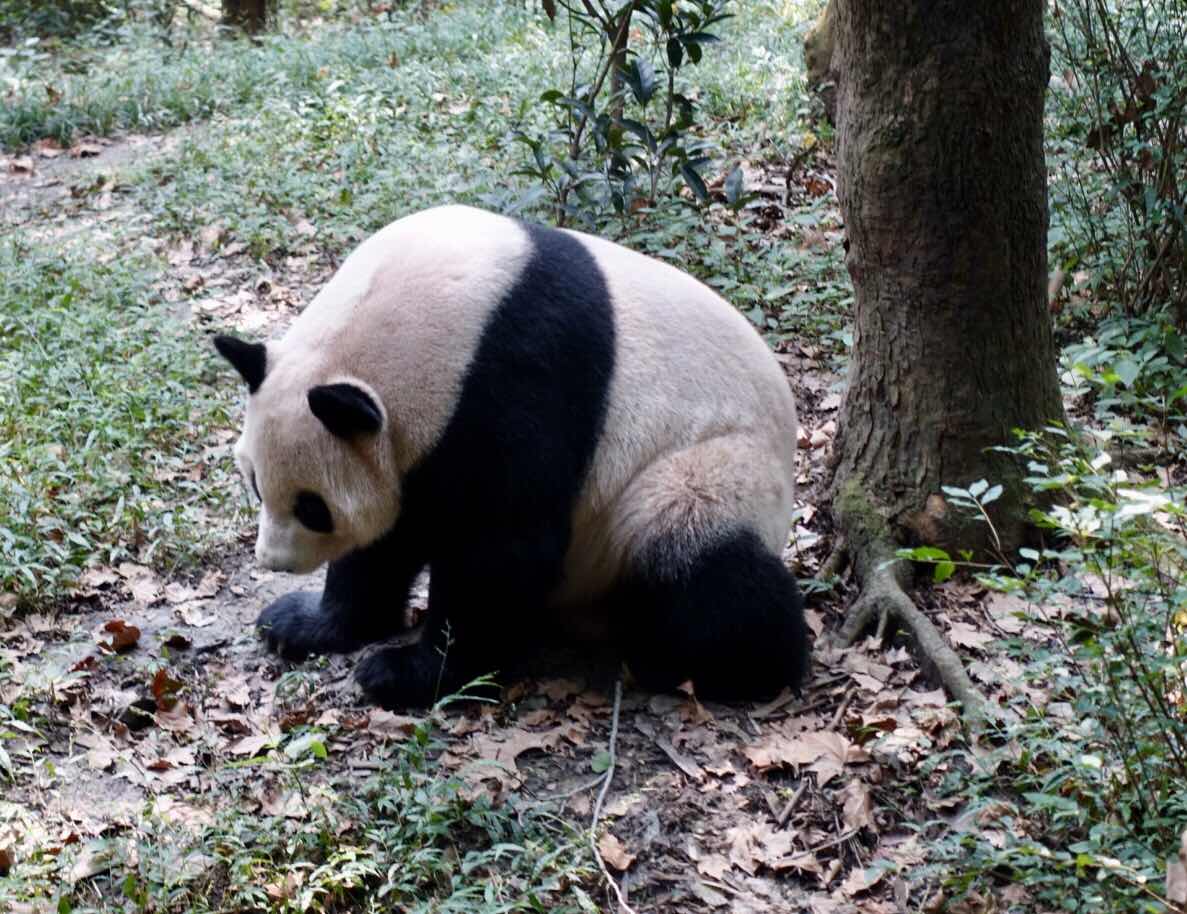

They are cuddly
These are pandas too, less famous and less cuddly


Wonder what he or she is pondering
The next day visit to the panda park was pleasant and informative. And of course we concluded the Chengdu visit with the traditional hotpot dinner, with so many red Chile peppers swimming in the broth that our stomachs started to protest.
Waiting for the hotpot to arrive in a “hotpot only” restaurant
Fiery red and tasting like it
Our next destination was Xian, the city every tourist to China has to visit to see the Terra Cotta soldiers, an impressive array of dug up soldiers and officers in various conditions of survival, constantly being restored as tourists gape in awe down on them over a railing. It is a very large hall where they are on display to large daily crowds and we were told that what we were seeing is only a fraction of what still needs to be dug out.
This is the very first thing you see after entering the museum
And even the detail is awe inspiring
And consider this: many more acres are still to be dug up
The details are unbelievable
Heads are always made separable and later placed on the bodies.
The other reason people visit Xian, (by the way 7 million citizens - one gets less and less impressed with large numbers here, as it begins to feel like “everything is bigger in Texas”), is the Wild Goose Pagoda, where Buddhist volunteer guides tell you the stories of the proselytizing monk Xuanzang who came from India with elephants and jade figurines “converting” the then Tang Dynasty Emperor from Chinese Buddhism to Indian Buddhism, which he considered the Proper Way. The emperor built this Pagoda in 652, which had since various restorative configurations.
Wild Goose Pagoda
The tower is terra cotta built and not open to the public
Memes are so so Chinese. Where does that come from?
Statue parks are also very Chinese all over the country.
Mount Hua Gondola system: really impressive- not just the system but also the views
You can also “walk” to the top
But as you see some parts are steep climbs

And on top the ridge is narrow and full of crowds
Almost ready to be getting a professional picture at the cliff edge.
The views make you realize how high up you are.

But if so desired you can walk up even higher
I read not too long ago that bad weather halted the rides, leaving many swaying heavily in the suspended cable cars throughout the night, and forcing thousands who were still up on the mountain to walk the several miles long slippery trail down or stay up on the very chilly mountain top till the weather died down the next day for the gondolas to restart their work again.
Getting to the gondola feels like being in the airport check in line
Down before going to the top a meme park again


And majestic gates welcoming you to the entrance to Mt Hua
Picture Moments all around us
But the pictures show you the breath taking sights.
Here ends our China story as you already read all about our Shanghai visit from which we left China for Japan and later towards Taiwan.
Just a neat picture of a reading girl
An old tree surrounded by Buddhist red ribbons
Diorama entertainment you cannot find anymore in the western world

Comments
Post a Comment